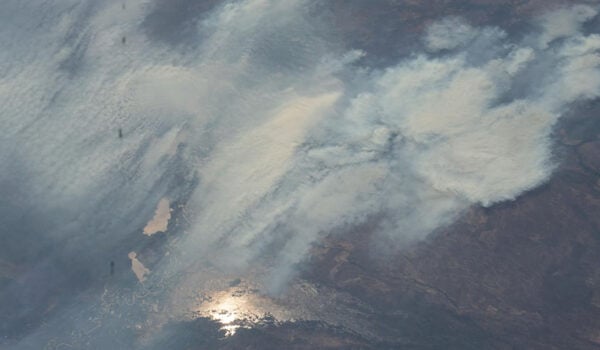The global air quality is getting better. Which is good for our health, but cleaner air may also lead to a warmer climate because less solar radiation is reflected back into space. The key element is called aerosols.
Aerosols are suspended liquid or solid particles in the air. They can have numerous sources, ranging from pollen, certain gases and sea spray to black carbon (soot) and tire wear. They also play an important role in the warming and cooling of the atmosphere.
According to the recently published Norwegian greenhouse gases and aerosols monitoring report, aerosols are currently the largest uncertainty when it comes to our understanding of climate change. This is mainly due to their effects on cloud formation.
Clouds act like mirrors
Most of the Earth’s energy comes from the sun. Around 71% of the sunlight that reaches the Earth is absorbed by its surface and atmosphere and transformed into heat. Any light not absorbed by the surface is mostly reflected. This reflection occurs when incoming solar radiation bounces off an object or surface in the atmosphere, on land, or in the water. Such reflected radiation is not transformed into heat.
The proportion of incoming solar radiation that is reflected by the Earth is known as its albedo. Different surfaces have different albedos. Dark surfaces such as dense forests have lower albedos than light surfaces such as snow and ice. Certain gases in the atmosphere also have high albedos and reflect higher amounts of sunlight back into space.
“This is where aerosols come into play. Aerosols are very important for cloud formation, properties and cloud droplet size, as clouds cannot form in the atmosphere without particles providing a surface for condensation,” says senior scientist Stephen M. Platt from NILU.
Less air pollution, more atmospheric warming?
Since clouds reflect sunlight into space, modifying Earth’s albedo, it follows that particles have a major impact on climate. As part of clouds, they have a direct impact on incoming solar radiation, either scattering light which cools the planet or absorbing light causing warming.

Recent NILU data reveal that long-term trends in aerosol scattering and absorption are changing significantly, particularly at the Birkenes Observatory in the southern part of Norway. There, the monitoring data shows a clear decrease in aerosol scattering.
“This reduction is closely linked to successful air quality initiatives ensuring cleaner air, such as the Gothenburg Protocol. Less air pollution is of course positive for human health, but at the same time it means fewer particles in the atmosphere. This decreases the particles’ cooling effect and thereby contributes to an increased warming influence on the climate,” says Platt.
He goes on to explain that there is an uncertainty range when it comes to just how big the aerosol cloud effect is. If the cooling caused by aerosols is at the lower end of the uncertainty range, i.e. they cause more cooling, it means aerosols are ‘covering up for’ or masking more of the warming from greenhouse gases than scientists have previously thought. Then, the aerosol cloud effect could cause around 0.4°C of cooling (light blue in Figure 1).
This also means that if direct aerosol emissions decrease, the aerosols can no longer keep up the masking. Thus, the hidden warming could be revealed, potentially leading to faster climate warming. On the other hand, Platt says there are several factors such as ocean heat uptake that also influences these warming projections.
“In sum, fewer polluting particles in the air is positive. But, as their cooling effect on the atmosphere is then reduced, we must make up for this by cutting our emissions of greenhouse gases,” concludes Platt.
Updated monitoring program in 2023
In 2023, NILU significantly updated the reporting of aerosol physical and optical properties in the monitoring program for greenhouse gases and aerosols at the Zeppelin and Birkenes Observatories. With several years’ worth of data, it has now been possible to determine statistically significant trends for many of NILU’s aerosol variable measurements. Furthermore, the way NILU performs many of their measurements is also evolving with higher quality and lower uncertainty.
“We are now implementing the Aerosol, Clouds and Trace Gases Research Infrastructure (ACTRIS) routines for harmonized measurements and data quality control. Our observatories are in the labelling phase of becoming ACTRIS National Facilities,” says senior scientist Cathrine Lund Myhre.
According to her, these updates are both timely and necessary, since there has been considerable focus on aerosol uncertainties. Large effort is also put into having near real-time observations, and this will improve largely in 2025. There is also great interest in how changes in aerosols might be related to the record global average temperatures of 2023, as well as the impact of numerous wildfires.
With these updates, NILU’s monitoring is equipped to understand long term developments in aerosols and contribute to more informed policy decisions regarding air quality and climate change mitigation.
“Our real-world observations of both scattering and absorbing aerosols yields data that support more precise climate risk assessments. This work underscores the importance of maintaining aerosol monitoring to understand and address the potential acceleration of climate warming as aerosol concentrations decrease,” says Lund Myhre.







